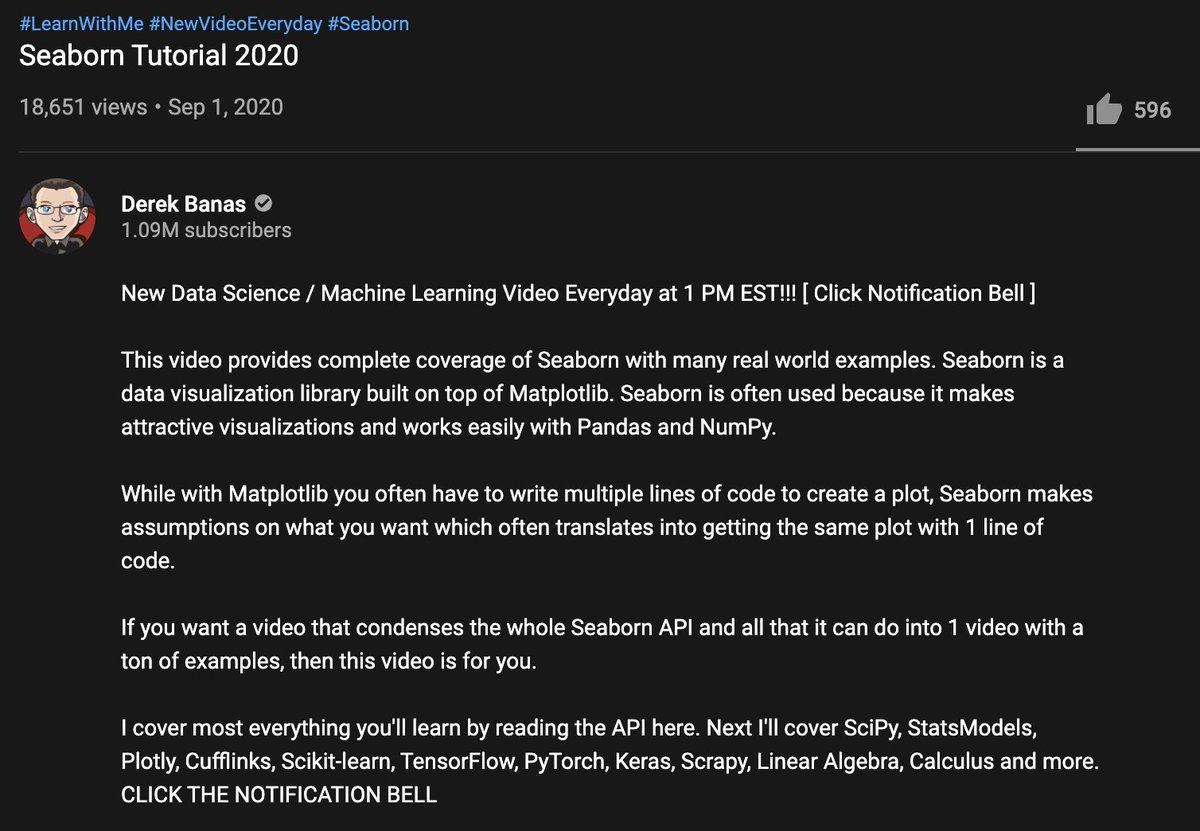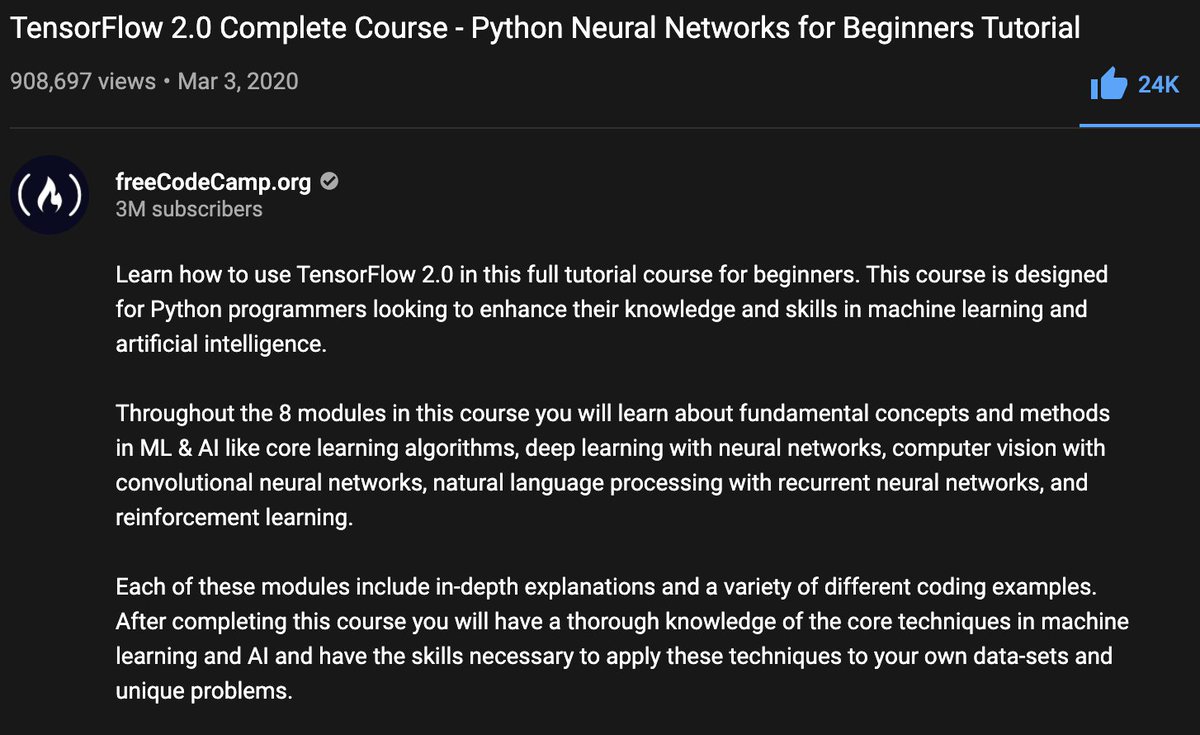
10 machine learning YouTube videos.
On libraries, algorithms, and tools.
(If you want to start with machine learning, having a comprehensive set of hands-on tutorials you can always refer to is fundamental.)
🧵👇
On libraries, algorithms, and tools.
(If you want to start with machine learning, having a comprehensive set of hands-on tutorials you can always refer to is fundamental.)
🧵👇
1⃣ Notebooks are a fantastic way to code, experiment, and communicate your results.
Take a look at @CoreyMSchafer's fantastic 30-minute tutorial on Jupyter Notebooks.

Take a look at @CoreyMSchafer's fantastic 30-minute tutorial on Jupyter Notebooks.

2⃣ The Pandas library is the gold-standard to manipulate structured data.
Check out @joejamesusa's "Pandas Tutorial. Intro to DataFrames."

Check out @joejamesusa's "Pandas Tutorial. Intro to DataFrames."

3⃣ Data visualization is key for anyone practicing machine learning.
Check out @blondiebytes's "Learn Matplotlib in 6 minutes" tutorial.

Check out @blondiebytes's "Learn Matplotlib in 6 minutes" tutorial.

4⃣ Another trendy data visualization library is Seaborn.
@NewThinkTank put together "Seaborn Tutorial 2020," which I highly recommend.

@NewThinkTank put together "Seaborn Tutorial 2020," which I highly recommend.

5⃣ Numpy is another Python library that you will use every single day.
@keithgalli's "Complete Python NumPy Tutorial" is a great start.

@keithgalli's "Complete Python NumPy Tutorial" is a great start.

6⃣ One of the most basic algorithms that you can learn is Decision Trees.
Watch @random_forests' video where he builds a decision tree from scratch:

Watch @random_forests' video where he builds a decision tree from scratch:

7⃣ It's hard to talk about machine learning without touching on neural networks.
Probably the best video out there that explains how neural networks work is @3blue1brown's:

Probably the best video out there that explains how neural networks work is @3blue1brown's:

8⃣ Scikit-Learn is one of the most popular machine learning libraries out there.
@simplilearn's "Scikit-Learn Tutorial" is a great place to start.

@simplilearn's "Scikit-Learn Tutorial" is a great place to start.

9⃣ TensorFlow is the most popular deep learning library that's currently used in the industry.
Here is a massive 7-hour tutorial of TensorFlow 2.0 produced by @freeCodeCamp.

Here is a massive 7-hour tutorial of TensorFlow 2.0 produced by @freeCodeCamp.

🔟 Finally, a great way to start getting familiar with machine learning is the bite-sized recipes published by Google.
This series is worth every minute.
Playlist:
This series is worth every minute.
Playlist:

If you are looking for real-life, hands-on information related to machine learning, follow me.
✌️
If you have questions or suggestions about topics you'd like to hear about, let me know.
✌️
If you have questions or suggestions about topics you'd like to hear about, let me know.
• • •
Missing some Tweet in this thread? You can try to
force a refresh


